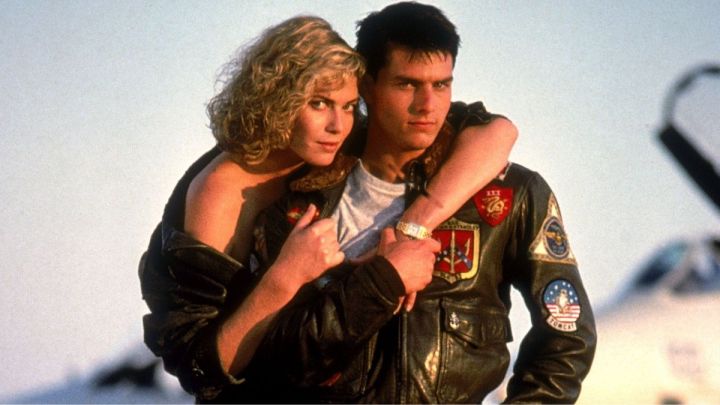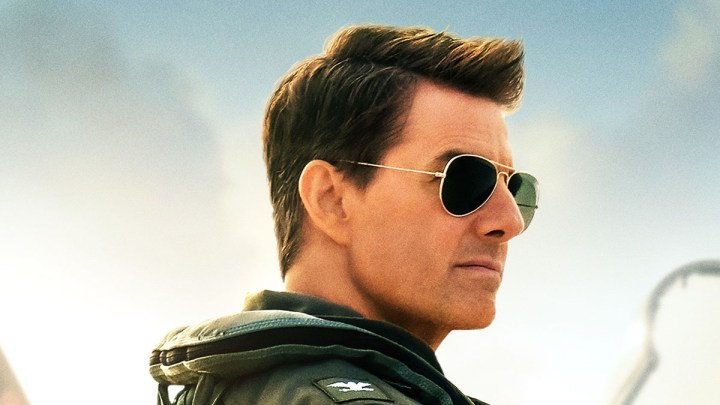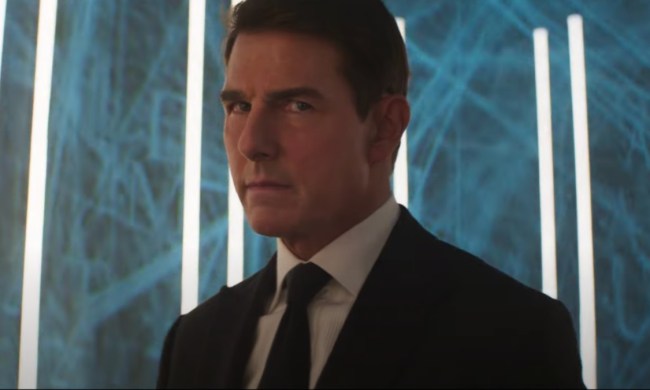In the pantheon of great Tom Cruise films, we can find the usual suspects. There’s the Mission: Impossible series, of course, a franchise that redefined the way we experience action blockbusters. then there are the tentpoles — Interview with the Vampire, Minority Report, The Last Samurai — that cemented him as a box-office draw. And finally we have the critical darlings — A Few Good Men, Born the Fourth of July, Jerry Maguire, Magnolia — that confirmed he was more than just another pretty face. And then there’s 1986’s Top Gun.
Cruise was not an unknown when he first played Maverick — indeed, the actor rose to prominence with the one-two punch of The Outsiders and Risky Business in 1983 — but Top Gun marked a before-and-after point in his career. Cruise went from young and promising actor pre-Top Gun to hunky and bona fide movie star and legend in the making post-Top Gun. In other words, Top Gun took Tom Cruise and turned him into Tom Cruise.
Take our breath away

What was it about Top Gun that fascinated audiences then and now? Was it Cruise’s undeniable charm and charisma, a sex appeal that few, if any, actors of his time had? Was it the surprising love story between Cruise’s hotshot Maverick and the absurdly beautiful-yet-tough instructor Charlie (Kelly McGillis), enhanced by the timelessness of Berlin’s “Take My Breath Away,” the mother of all ’80s power ballads? Was it the latent homoerotic tension shared between any of the film’s numerous male characters or the over-the-top and thrilling action sequences that seemed taken out of real life while somehow remaining blatantly outlandish? All of the above.
Top Gun was one of a kind when it premiered in May 1986. Action films of the 1970s were brutal and somewhat ruthless — a natural progression of the noir and crime genres that gave rise to masterpieces like The French Connection and Chinatown. There was a deeply humane quality to their hardened detectives and dangerous women. But Top Gun was a new kind of breed, an action film that placed remarkable focus on the action rather than the characters performing it. The aerial sequences were monumental, going way past the thrilling and into the electrifying, bringing a sense of dynamism that made them seem utterly extraordinar,y yet somehow possible.
The film redefined what it meant to be a Navy pilot, romanticizing the experience and reframing it as a hot guy’s job. Even Goose’s death wasn’t enough to convince young men not to join the Navy following Top Gun. In his book Operation Hollywood: How the Pentagon Shapes and Censors the Movies, veteran journalist David L. Robb retells how the Navy stated that the number of young men joining up spiked by 500% after Top Gun‘s release.
Because who wouldn’t want to be Tom Cruise, wearing aviator shades and soaring to the skies after feeling the need for speed? Who wouldn’t want to charm the ladies while wearing a bomber jacket or playing volleyball shirtless on the beach? Top Gun did for the Navy what the Indiana Jones films did for archeology: Make it hot, incredibly exciting, and ridiculously unreal.
The myth of Tom Cruise

Risky Business turned Tom Cruise into an idol, but Top Gun made him a star. The film marked the beginning of Cruise’s undisputed reign as a major box office draw, cementing him as the definitive star of the late ’80s and early ’90s and the action hero of tomorrow. Long gone were the hardened and unbreakable men of noir and crime thrillers of yesteryear, replaced by a new kind of hero, one that seemed straight out of a magazine, more at home in a Calvin Klein ad than at the police station. He looked great shirtless and had a dazzling smile that could charm men and women alike. And Tom Cruise was the poster child for the archetype.
Top Gun was the prototype for many of Cruise’s future roles. In his Days of Thunder review, Roger Ebert described the typical Tom Cruise picture, using Top Gun as the blueprint for the formula. Indeed, many of Cruise’s portrayals — young and inexperienced, yet naturally talented and spirited men humbled by a female character Ebert described as “the superior woman” — resembled Maverick in more than a few ways. From The Color of Money and Cocktail to The Firm and Days of Thunder, and well into the new millennium with films like The Last Samurai, the Cruise formula prevailed. It’s no surprise that some of Cruise’s most acclaimed performances — Born on the Fourth of July, Jerry Maguire, Magnolia, and the underrated Collateral — openly reject the archetype, allowing Cruise far more liberty and range.
Yet, it’s hard to hold anything against Top Gun. After all, the film created the myth of Tom Cruise. Sure, Rain Man was the most successful film of 1988, and A Few Good Men delivered some of the most quotable lines in the early ’90s, but neither made Tom Cruise a legend; on the contrary, Cruise is a huge reason why those films are modern-day classics.
But Top Gun was Cruise’s platform to stardom. We rarely see such a perfect combination between the right actor and the ideal project. Cruise and Top Gun were a match made in heaven, with the film providing the perfect opportunity for Cruise to bask in and flaunt his undeniable charisma and good looks, and he capitalized on them to craft his image. It’s no wonder Cruise chose to remain associated with the Maverick archetype; if it’s not broken, why fix it?
Cruise’s connection with Top Gun remained undeniable for years to come, even as his career grew into the apex of Hollywood. The film’s influence might not have been explicitly declared, especially as other roles became more closely associated with Cruise’s oeuvre, but remained tacitly present. Naturally, no one was even remotely surprised when Paramount announced a legacy sequel to the film. If anything, most of us were shocked it took so long to make.
The one and only

Top Gun: Maverick premiered to near-universal acclaim. Critics deemed it vastly superior to the original, praising the action and pronouncing it one of the all-time great blockbusters. Top Gun: Maverick is another highlight in a career full of them. Cruise and company took the time to deliver something perfectly crafted, and their effort is noticeable.
The original film welcomed Cruise as the action man of tomorrow, but Top Gun: Maverick cements him as the star of today. No one is doing it like Cruise because hardly anyone tries to anymore. The actor keeps pushing the boundaries of what’s possible, delivering increasingly thrilling and unparalleled cinematic experiences. Many have called Cruise the last movie star, and there’s a good reason; it’s not that no one else is capable of doing what he does — it’s that no one seems willing to even try. But Cruise cares enough for everyone, and his fans care in return.
Tom Cruise knows his craft. Like Maverick himself, he did the work, learned from the best, and humbled himself to the audiences that built his myth, becoming the master of his craft. Now, he assumes the mentor role, inspiring new generations with his prowess. It’s the circle of life and a beautiful and almost poetic development that the character that initiated Cruise’s path to cinematic immortality is the one that cements it for good. Cruise and Maverick: Legends of the screen.
Top Gun is now streaming on Paramount +. Top Gun: Maverick is currently in theaters nationwide.



